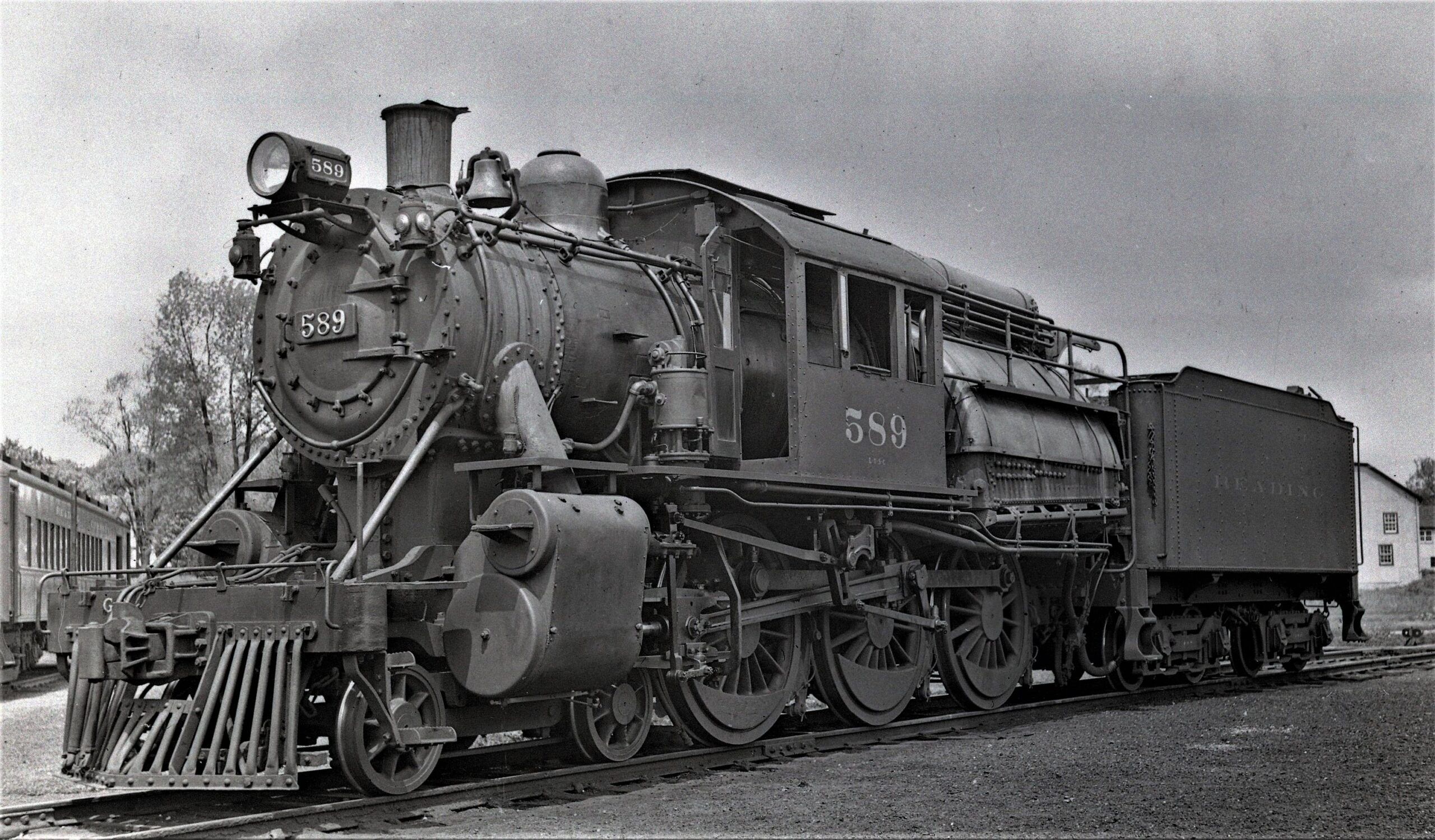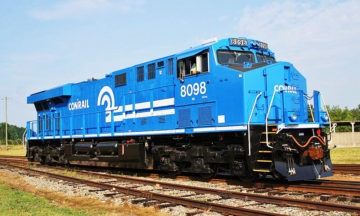This is an Encore of a Musings which dates back nearly two years now … where I describe this very unique steam locomotive, used primarily by railroads operating in the Mid-Atlantic states, the region where the greatest supply of anthracite (hard) coal is found, the type required for the camelback’s firebox.
In addition, this Musings includes a brief commentary by yours truly regarding the Reading Railroad’s Newtown, Bucks County, Pennsylvania line into the downtown Philadelphia Reading Terminal. Nothing stated in the commentary is any different today than it was two years ago. The village of Newtown station area–where this locomotive is sitting–has been put to other use, but the remainder of the track, except as described, is still in place and traffic congestion is just as bad. And the Southeastern Pennsylvania Transportation Authority (universally known as SEPTA) still has zero interest in re-activation … even as a few years ago, when a private firm sought permission to re-build and restore service, SEPTA management totally opposed the plan. The last regular service to Newtown ended in 1983, with service being provided by Budd Company RDC’s (Rail Diesel Cars) following discontinuance of steam operations by the Reading.
Originally posted February 6, 2018.
As you see in this photo, the engineer’s cab is located on the side of the boiler – the large round portion of every steam locomotive, where the steam is generated to power the driving wheels – rather than behind the boiler, which is the norm for virtually every other type of steam locomotive.
Hence, this design took on the “camelback” name, because the engineer sat astride the boiler. It became a very popular locomotive for pulling short passenger and freight trains on railroads such as the one which I grew up with … the Reading Railroad.
This locomotive was also unique in that it could burn anthracite or “hard coal,” which is found only in eastern Pennsylvania and was used mostly for home heating. At the same time, the mining process left a fair amount of waste, as the coal chunks to be sold for heating could only be so small in size. Conversely, this proved to be beneficial for the Reading and other railroads that ran into the region, as the camelbacks ran fine using this scrap material, providing the railroad with a cheap source of fuel. Plus, it was great for passenger train operation, as this coal delivered much less smoke than the bituminous or “soft coal” normally used for locomotives.
Now that you’ve had that technical history lesson, I can pick up where I left off in sharing my early years’ story on the About page.
The locomotives which pulled the passenger trains from the station in Newtown, Bucks County, on which my Grandfather Taylor served as a conductor and the freights which dropped off cars at the coal yard across from where I lived during the WWII years were these camelbacks! In fact, the loco pictured here is at the Newtown station in May 1941, awaiting its turn to haul a passenger train to the Reading Terminal in center city Philadelphia.
Today, considering traffic congestion, this area could really benefit from having commuter rail service. However, since the Southeastern Pennsylvania Transportation Authority has long had an “electrified railway” mindset and, as this branch had never been electrified, SEPTA chose to abandon it in the 1980’s. Now, while much of the trackage is still in place, even though it’s overgrown and road crossings paved over … there’s little hope of resurrecting – further down the line, in an area known as Bryn Athyn, which has little need for commuting options … several miles of the track has been torn up and replaced with a walking trail.
Non-electrification really has not had to be an issue, especially in more recent times. There are a variety of dual-power locomotives which can use diesel power from Newtown down to Huntingdon Valley, where the line formerly crossed the Reading’s West Trenton line and now could join it, and then segue into an electrical mode and continue under the wires into the city.
There’s a little rail history with a little commentary added on for good measure. May your rails stay shiny for many a day to come!




